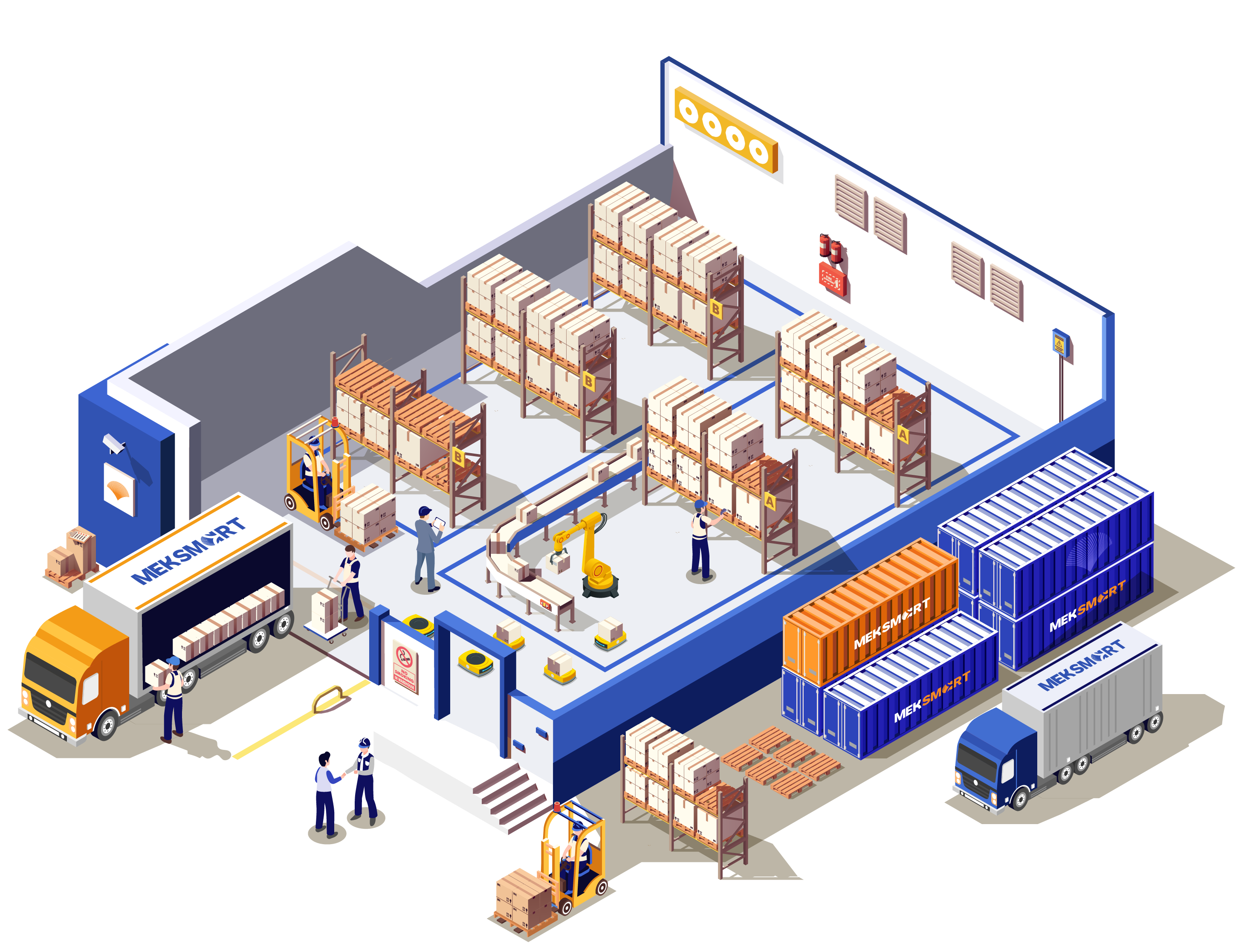MEKSMART
GENERAL NEWS
Author: TIÊN HUỲNH
Update: 31/01/2024
AMERICAN RETAILER RETURNS TO LEARN INVENTORY STRATEGY
(KTSG Online) – Inventory levels that skyrocketed during the Covid-19 pandemic are decreasing but US retailers are still hesitant to order new stock. They are reviving their old strategy to manage inventory levels more appropriately and leanly after four years of struggling to find the right balance, keeping the supply of goods adequate but not too much.

Retailers are returning to lean, just-in-time inventory strategies. Photo: dynamictech
American retailers have been dealing with excess inventory piling up on shelves and in warehouses over the past 18 months and are now focused on just-in-time replenishing items to meet demand, rather than stocking up on ready-made goods to deal with the risk of supply chain disruption.
The change marks a return to the “just in time” inventory management strategy that many companies adopted before product shortages caused by supply chain disruptions during the pandemic, and volatile changes in consumer demand prompted a shift to “just in case” storage methods.
Jamie Bragg, director of supply chain at men's fashion retail chain Tailored Brands in Texas, said just-in-time inventory management is the company's goal. Tailored Brands has worked over the past few years to gain a better view of overseas manufacturing orders, thereby adjusting orders based on demand.
“We are importing the necessary inventory to support our sales plans and can monitor the supply chain for up to 180 days to adjust up or down based on the demand signals we receive.”, Bragg shared. The ability to react quickly to changes in demand means the company doesn't need just-in-case inventory, he adds.
According to Terry Esper, a logistics professor at Ohio State University, companies are now better able to predict consumer demand and feel they can stockpile less inventory amid cost growth. Moderate spending and less supply chain disruption.
“Retailers have more confidence in their overall supply chains, logistics networks, and business environment, so they see this as a safe time to return to a 'just-in-time' inventory strategy,” Esper said.
Logistics experts say that companies often do not want to stockpile large amounts of inventory because this will increase storage costs, and require more space and manpower to manage, and goods may be The risk of becoming outdated when trends change.
US retailers are scrambling to bring inventories back in line with sales after overstocking on goods that are no longer in demand in 2022 as consumers shift spending away from items such as jewelry. home decoration to office attire, then to travel.
According to the U.S. Census Bureau, the inventory-to-sales ratio at general merchandise retailers, which tracks how much inventory is in stock relative to how much they sold, fell to 1.36 in January. 11 from a pandemic-era high of 1.5 in August 2022. The ratio in November 2019 was 1.33.
“Basically, American retailers are returning to the inventory strategy of 2019,” said Jason Miller, a logistics professor at the University of Michigan.
The Logistics Managers Index (LMI), a monthly survey of supply chain managers in the US, showed inventory levels in December fell for the seventh time in eight months.
However, experts warn, new supply chain disruptions could prompt retailers to take a different approach and add more stock. Recent attacks by Houthi rebels on container ships in the Red Sea have forced companies to reroute longer-distance shipments to avoid this dangerous sea area. Meanwhile, low water levels in the Panama Canal also delayed some deliveries to the US.
Consumer spending growth in the US slowed down due to the impact of high inflation and rising interest rates. According to the US Department of Commerce, seasonally adjusted US retail sales in December increased 5.6% from a year ago. That was the highest increase since the beginning of 2023, but lower than the growth rate. throughout 2021 and 2022.
Tanja Dysli, director of supply chain for the US branch of domestic retailer IKEA, said the company has returned to importing at the same volume as before the pandemic. She said IKEA is taking a “just-in-time” approach to inventory.
“We are more or less back to normal in terms of inventory levels and product availability,” she said.
Retailers like Walmart have deployed technology to overcome flawed forecasting tools during the pandemic as they seek to better understand what consumers are buying and predict demand more accurately.
The technology allows retailers to stock smaller, more precise shipments than before, said Rob Handfield, a North Carolina State University supply chain management professor.
According to David Guggina, Walmart's Executive Vice President of Supply Chain, his company currently only restocks when necessary based on consumer demand.
“You won't see the same level of disruption upstream in the supply chain as in 2020 and 2021. We can predict delivery times better, we can do better review cycles, thanks to That way, we can reach the target inventory level,” Guggina said.
Walmart is looking to increase sales with leaner inventory. Walmart reduced U.S. inventory by 4.8% in the quarter that ended October 27 compared with the same period last year while same-store sales increased by 4.9%.
According to thesaigontimes.vn







